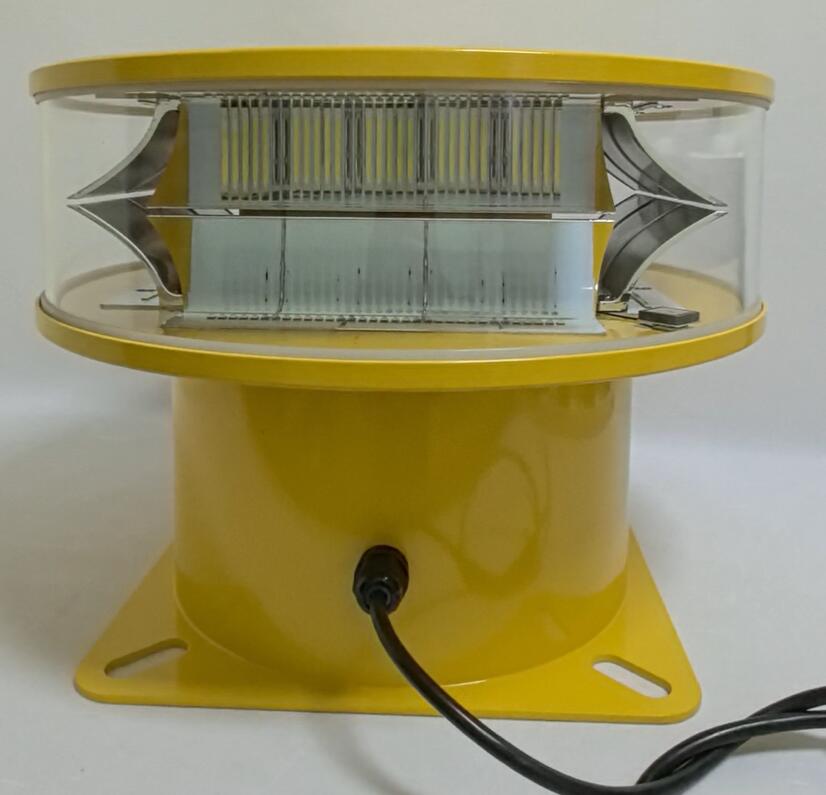Posted: 2024-12-23
In the realm of aviation and infrastructure, safety remains a top priority. Among the critical components ensuring this safety are obstruction lights, essential for marking structures that may pose hazards to aircraft. The emergence of LED obstruction lights FAA-approved has transformed this domain, offering enhanced reliability, durability, and efficiency. This article explores how these advanced lighting systems have redefined safety protocols.
The Importance of FAA-Compliant Obstruction Lights
The Federal Aviation Administration (FAA) sets stringent guidelines to regulate obstruction lighting. These rules ensure that structures, such as communication towers, wind turbines, and tall buildings, are visible to pilots, minimizing collision risks. Non-compliance can lead to penalties, operational disruptions, and, most critically, safety hazards. LED obstruction lights FAA-compliant adhere to these rigorous standards, guaranteeing optimal performance under various environmental conditions.

Advantages of LED Obstruction Lights
LED technology offers a range of benefits over traditional incandescent and halogen systems. The primary advantages include:
Energy Efficiency: LED obstruction lights consume significantly less power, reducing operational costs. Their energy-efficient design is particularly beneficial for off-grid installations relying on solar power.
| LED Obstruction Lights FAA Compliance |
| LED Obstruction Light FAA Compliance |
Longevity: With a lifespan exceeding 50,000 hours, LED lights require minimal maintenance, ensuring consistent performance over extended periods.
Enhanced Visibility: LEDs produce brighter and more focused illumination, improving visibility for aircraft pilots even in adverse weather conditions.
Durability: Built to withstand extreme weather, LED obstruction lights are resistant to shocks, vibrations, and temperature fluctuations.
Eco-Friendly Design: LEDs are free from harmful substances like mercury, making them an environmentally responsible choice.
Applications of LED Obstruction Lights FAA-Approved
These advanced lighting systems are deployed across various industries, ensuring safety in diverse environments:
Telecommunication Towers: Ensuring that antennas and towers are visible to low-flying aircraft.
Wind Turbines: Marking turbine blades and structures in remote or offshore locations.
High-Rise Buildings: Highlighting skyscrapers in urban areas to prevent accidents.
Airports: Enhancing runway and taxiway safety.
Bridges and Chimneys: Making these structures visible to both pilots and maritime vessels.
Compliance and Certification
Choosing LED obstruction lights FAA-certified ensures adherence to the required safety standards. Manufacturers undergo rigorous testing to verify that their products meet FAA specifications, including intensity, color, and operational performance. Certification not only guarantees safety but also instills confidence among stakeholders.
Innovations in LED Obstruction Lighting
Technological advancements continue to drive innovations in obstruction lighting. Modern LED systems now incorporate features such as:
Smart Monitoring: Enabling real-time diagnostics and performance tracking to ensure optimal operation.
Solar Integration: Supporting sustainable energy solutions for remote installations.
Adaptive Lighting: Automatically adjusting brightness based on ambient light conditions, enhancing visibility while conserving energy.
Economic and Environmental Impact
Switching to LED obstruction lights FAA-compliant is a cost-effective investment for businesses and governments. Reduced energy consumption and maintenance translate to substantial long-term savings. Moreover, the eco-friendly attributes of LED systems contribute to reducing carbon footprints, aligning with global sustainability goals.
Final Thoughts
LED obstruction lights FAA-approved are not just a technological upgrade; they are a leap forward in safety and sustainability. Their unmatched performance, durability, and compliance with stringent standards make them indispensable in safeguarding both air traffic and critical infrastructure. As technology evolves, these systems will continue to set new benchmarks in aviation and structural safety, ensuring a brighter and safer future for all.